The content of the article
Gel extension is very popular among a beautiful half of the population. Thanks to special technology and strong tips, you can achieve the ideal length of the nail plate and make it even. Artificial attributes are practically no different from natural attributes, it all depends on the skill of the specialist. However, the procedure has a significant minus - when the native nail grows, a pale pink strip is visible near the cuticle. In such cases, it is necessary to carry out the correction, which we will talk about today.
Types of gel correction
- correction "Classical" (simple);
- Correction "Complex";
- correction "Mini";
- correction using gel polish.
Necessary tools and materials
- You need to get a gel with which you will be corrected nails. French requires a white composition or acrylic paint. The substrate needs a transparent gel base. In addition, you need to purchase a gel base.
- Prepare brushes in advance for applying the composition. In the case of a jacket, the end of the tool should be beveled. In all other variations, a convex brush is suitable.
- To eliminate grease and dirt, a degreaser is used; it is sold in professional stores for nail masters.
- To ensure proper adhesion of the artificial composition to the native nail, you need to use a primer. It can be acidic and non-acidic, the choice depends on personal preferences.
- When conducting gel correction of the nails, one cannot do without a milling cutter (typewriter). An analogue is nail files for artificial coating of different abrasiveness. You need tools with a hardness of 100-240 Grit.
- To fix the final result, take care of the presence of a finish coating (fixer, finish, top varnish). It will give shine to the finished extended nails and provide protection for the next 2-3 weeks.
- After correction of nails, a sticky layer forms on the gel coating, it is also called dispersed. If this feature is not eliminated, dust will stick to the plate. Therefore, purchase a special fluid to eliminate stickiness.
- Correction is carried out using paper forms; purchase them in a specialized store. Also, an ultraviolet lamp with a power of 36 watts is required, without it drying the gel becomes impossible.
Important!
- Before proceeding with the correction, assess the condition of the plate. Examine the extended nails, identify where the gel exfoliated.
- It is also important to evaluate your own health. In some ladies, the gel does not hold due to high sweating of the hands, hormonal disruptions, impaired care of extended nails, and long-term use of antibiotics.
- If you relate to one of these categories, postpone the correction for some time. Eliminate the cause, heal your health, only then proceed with the manipulations.
Classical (simple) gel nails correction
- The procedure is carried out after 20 days of wearing artificial nails. The gel is applied only to those parts of the native plate that are noticeable to the industry (cuticle area, lateral periungual roller). Correction takes no more than 1 hour.
- Apply an antiseptic to your hands, rub it, wait for the molecules to evaporate (5 minutes). If necessary, perform a European or trim manicure. If the nails are too long, shorten the tips to the desired length and file the free edge of the plate.
- Assess the condition of the nails. Cut off the gel at the exfoliation sites using a nail file or milling cutter. Sand the surface of the nail to make it more or less even.Using a fine abrasive file, remove the tubercle from the gel, as it breaks the symmetry and looks unnatural.
- Take a file No. 240, make a plate opaque. Your actions should be careful and soft, otherwise the native nail is injured. Wipe off any remaining dust with a paper towel or brush.
- Degrease the plates. Those areas of native nails that are branches need to be primed for better grip. In no case do not apply the composition in a thick layer, otherwise the gel will peel off.
- Distribute the base on the surface of the native nail and artificial plate. Put your fingers in the lamp for 2 minutes. If you feel pain during the polymerization (solidification) of the gel, remove your hands from the lamp, wait 5 seconds. Then send the nails back to dry.
- A sticky layer has appeared on the surface; do not remove it. Using a brush, spread the gel onto the native nail, gently stretch it over the tips, reaching the free edge. Do not allow the spreading of the composition, it should not come into contact with the cuticle. Keep a distance of half a millimeter.
- Send the gel to dry, lasting 2 minutes. Apply a second layer, form the apex - the highest point that makes the nail plate natural, symmetrical. Dry in the lamp for 2 minutes.
- After the gel has dried, file the coating with a low abrasive file. Give your nails a shape, make them as natural as possible. Do not damage the cuticle. Cover the finished work with a finish varnish, dry it in a lamp for 2.5-3 minutes.
- If after applying the finish there is an adhesive layer, remove it with a special liquid after the final hardening. The correction is over, if you wish, you can make a drawing and apply special oil to the cuticle.
Correction "Complex"
- The plate needs complex correction when you brought your nails for more than 1 month. The material moved almost to the center, there are chips on the surface, some nails are broken.
- This type of correction is practically no different from a full gel build-up. Cut the material to the backing so that a thin layer remains. Create a new nail, taking into account the length and height of the apex.
- Correct not only the front, but also the back of the plate. Cut off all irregularities with a milling cutter, consider the length. In the case of an aquarium design or jacket, you will have to restore the ornament again.
Correction "Mini"
- This type of procedure is rightfully considered the easiest and does not require special efforts. Correction is performed after a week (maximum) after building. In this case, the gel only exfoliates slightly, and it will not be difficult to “fix” it.
- Take a glass nail file, remove areas of the departed material. Remove dust with a brush, degrease the whole plate. Apply topcoat or fixer, dry it in the lamp for 2.5 minutes. If necessary, remove the sticky layer.
Correction of nails with gel polish
- Some girls prefer to take a break between build-ups, and rightly so. In such cases, in order not to cut off the artificial plate, carry out the correction with gel polish. A similar method will remove the artificial coating unnoticed, while you will always have well-groomed long nails.
- Correction technology is identical to the classical technique. In the process of grinding, remove the gel in such a way that it matches the native nail as naturally as possible. Do not form the highest point (apex), as the symmetry will quickly disappear.
- Give the nail plate the required length by cutting a few millimeters of the free edge. Adjust the form based on personal preferences. Primer the surface of the native nail, do not make the layer too thick.
- Put on a surface a basis under gel varnish, dry. Then directly distribute shellac itself (2 layers), dry each of them in a lamp for 2 minutes. Fix the result with the finish, send your fingers to the lamp for 3 minutes.Remove the sticky layer if present.
- Gel polish cannot be adjusted. After about 20 days, the nails will grow back, the artificial coating will have to be removed completely. Next, the nails either re-build or remain in their original state.
Each type of correction is distinguished by the duration of execution, technique, the amount of material used. The classical technique is considered basic, it is from it that you need to build on when performing other variations. Prepare the necessary materials and tools in advance, take care of the availability of high-quality nail files and an ultraviolet lamp.
Video: correction of extended nails




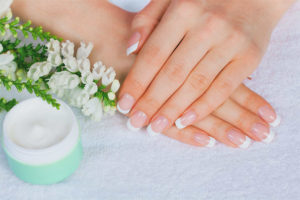
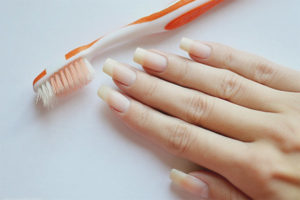
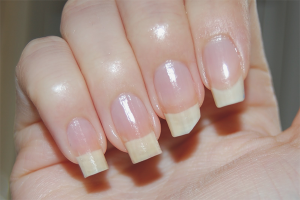
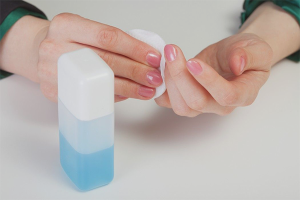
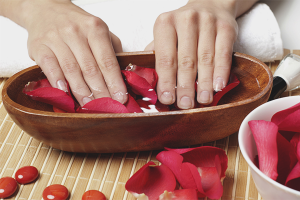
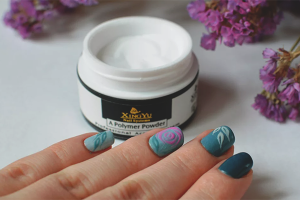
Submit